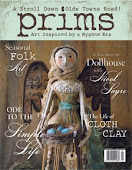 Burning a Yule log is probably the oldest Christmas tradition there is. It started even before the first Christmas. Celebrating Yule means no work as long as the special log burns. It does require gathering family, friends and neighbors for songs and stories, dances and romances, feasts and fun.
Burning a Yule log is probably the oldest Christmas tradition there is. It started even before the first Christmas. Celebrating Yule means no work as long as the special log burns. It does require gathering family, friends and neighbors for songs and stories, dances and romances, feasts and fun.At first, burning a Yule log was a celebration of the winter solstice. In Scandinavia, Yule ran from several weeks before the winter solstice to a couple weeks after. This was the darkest time of year, and the people celebrated because days would start getting longer after the solstice. There was quite a bit of ritual and ceremony tied to the Yule log, for it marked the sun's rebirth from its southern reaches.
The Yule log gets its name from the Scandinavian tradition, but the ritual burning of a special log during winter solstice took place as far west as Ireland, as far south as Greece, and as far north as Siberia.
In the fourth century AD When Pope Julius I decided to celebrate Christmas around the Winter Solstice, the Yule log tradition continued, but the fire came to represent the light of the Savior instead of the light of the Sun.
On or about Christmas eve, a big log was brought into a home or large hall. Songs were sung and stories told. Children danced. Offerings of food and wine and decorations were placed upon it. Personal faults, mistakes and bad choices were burned in the flame so everyone's new year would start with a clean slate. The log was never allowed to burn completely, a bit was kept in the house to start next years log. The log brought good luck. Any pieces that were kept protected a house from fire, or lightning, or hail. Ashes of the log would be placed in wells to keep the water good. Ashes were also placed at the roots of fruit trees and vines to help them bear a good harvest.
The burning of the Yule log marked the beginning of Christmas celebrations. In Appalachia, as long as the log, or "backstick" burned you could celebrate. Often a very large "backstick" was chosen and soaked in a stream to ensure a nice long celebration. In England the log was supposed to burn for the twelve days of Christmas, from Christmas eve on December 24th to Epiphany on January 6th. Some English Yule logs were large enough that a team of horses were required to drag it to the castle or manor. However you mark your Yuletide, the spirit of the tradition requires gathering family and friends for a warm and cheery celebration.
The Yule log gets its name from the Scandinavian tradition, but the ritual burning of a special log during winter solstice took place as far west as Ireland, as far south as Greece, and as far north as Siberia.
In the fourth century AD When Pope Julius I decided to celebrate Christmas around the Winter Solstice, the Yule log tradition continued, but the fire came to represent the light of the Savior instead of the light of the Sun.
On or about Christmas eve, a big log was brought into a home or large hall. Songs were sung and stories told. Children danced. Offerings of food and wine and decorations were placed upon it. Personal faults, mistakes and bad choices were burned in the flame so everyone's new year would start with a clean slate. The log was never allowed to burn completely, a bit was kept in the house to start next years log. The log brought good luck. Any pieces that were kept protected a house from fire, or lightning, or hail. Ashes of the log would be placed in wells to keep the water good. Ashes were also placed at the roots of fruit trees and vines to help them bear a good harvest.
The burning of the Yule log marked the beginning of Christmas celebrations. In Appalachia, as long as the log, or "backstick" burned you could celebrate. Often a very large "backstick" was chosen and soaked in a stream to ensure a nice long celebration. In England the log was supposed to burn for the twelve days of Christmas, from Christmas eve on December 24th to Epiphany on January 6th. Some English Yule logs were large enough that a team of horses were required to drag it to the castle or manor. However you mark your Yuletide, the spirit of the tradition requires gathering family and friends for a warm and cheery celebration.














































































1 comment:
Pam, thanks so much for that definition. I never knew what it stood for.
Love it!!
Take care,
Debbie:)
Post a Comment